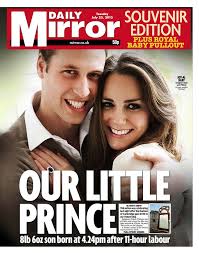House prices
- The dominant or hegemonic view is that high house prices are good.
- Lots of coverage – with high prices almost always presented as a good thing. Mostly positive stories.
- Stories generally presented from perspective of people who already own homes rather than those hoping to buy them – a classic example of the angle favouring the wealthy or ruling class.
- Very little reference to the fact that house prices and risky mortgages contributed to the major economic crash in 2008.
- Little coverage of the impossibility of buying a house for young people.
- However, columns, blogs and comments present different opinions that contradict the dominant or hegemonic view (often written by younger people)
The royal family
- The royal family is an dominant or hegemonic view, we have to accept it within the society, this is purely because the royal family are the ones who are in control of the country.

The sun had the royal wedding of Prince William and Princess Kate Middleton on the front page, and as a black women is reading it, it shows everyone was into this, showing how everyone wants to know about them and cares about what is happening in their lives as people are reading into it, despite reading is an newspaper is an old method of finding out information. Many people watched the royal wedding live on T.V and some went near to where the royal wedding was, people came from worldwide, to attend this wedding. This shows how dominating the wedding was, and how much attention it had gained.


Here is an image of the Princess and Prince, on their wedding day and in front of them all they see is millions of people, some whom have came from around the world just to attend this wedding, and some who are just local.

Daily mirror, had Kate and William on the front page, when they had there "little prince" the fact that it is on a magazine, it shows how much of a big issue.

The sun, also had included the fact the royal family had a baby, the headlines stated "the baby formally known as Prince George Alexander Louis of Cambridge" there was an image of the baby in large, and a smaller image of the parents holding the baby.